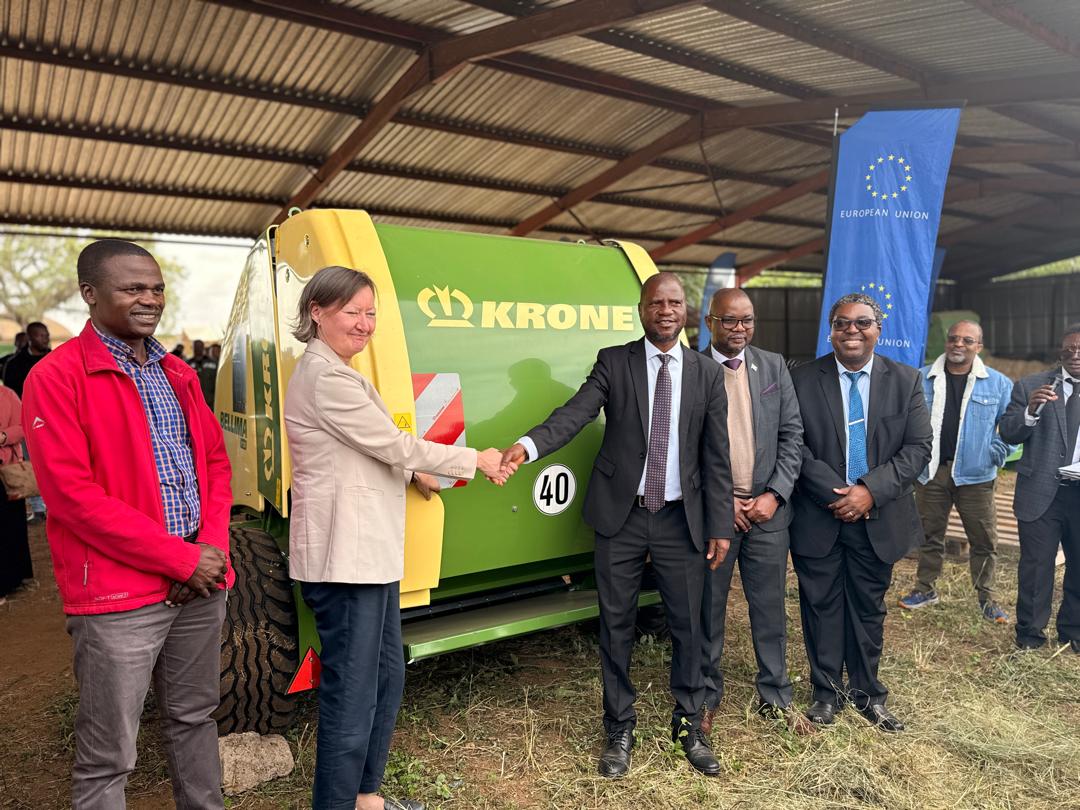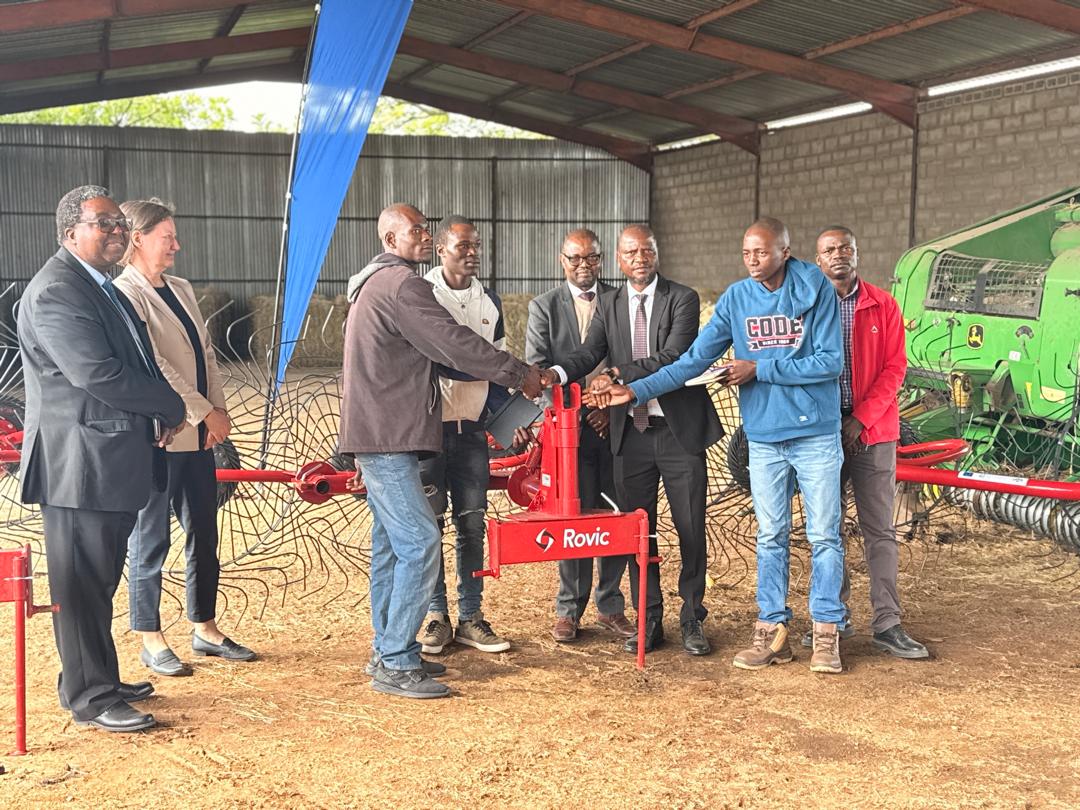E3.1 Million EU Investment Powers Hay Revolution for Eswatini Farmers
BY SIKHULILE DLAMINI
In a significant stride toward building a resilient livestock sector, the Ministry of Agriculture — with support from the European Union (EU) and the International Trade Centre (ITC) — has handed over hay-making equipment worth E3.1 million to boost feed production and reduce livestock losses in Eswatini.
The equipment, comprising round balers, mowers, rakes, and loaders, was officially unveiled at the Mpisi Cattle Breeding Station under the Eswatini Livestock Value Chain Development Project (ELVCDP). The move directly addresses a critical gap in hay and fodder supply that has plagued livestock farmers, especially during the dry winter months.
Farmers See Hope — and Income
“This is a game-changer,” said Celucoli Ndlangamnadla, a farmer from Mahlangatsha. “We no longer have to watch our animals starve. With this machinery, we can produce enough hay, sell the surplus, and turn our farms into sustainable businesses.”
Farmers in the pilot sites — Zinyane, Luhlekweni, and Mahlangatsha — will be the first to benefit. But the initiative is already inspiring hope across the country, with many viewing the equipment as a national asset that could spur job creation, especially among rural youth.
“This is not just about baling hay. It’s about creating opportunities,” Ndlangamnadla added. “Young people can be trained to operate these machines, manage hay yards, and sell fodder — it’s real agri-business development.”
Bridging the Feed Gap
Eswatini’s hay production has historically lagged behind demand. In 2024, only 1,252 round bales were produced — far below what’s needed to sustain government herds, let alone communal farms. The new equipment is expected to rapidly scale production, easing feed shortages and livestock mortality during dry spells.
Minister of Agriculture Mandla Tshawuka, speaking at the ceremony, called the investment a “critical intervention.”
“We cannot build a thriving livestock economy while animals die due to lack of feed,” Tshawuka said. “This investment strengthens our resilience against drought and climate shocks, while unlocking new income for farmers.”
Responsibility and Risk
With opportunity comes responsibility. The Minister warned that the equipment’s potential would be wasted if veld fires continue to destroy grasslands.
“Let us protect our grass before it is baled,” he urged. “Veld fires are not just environmental hazards — they are economic sabotage.”
To ensure long-term success, the Ministry will roll out training programmes for both government and communal farmers on how to operate and maintain the equipment effectively.
EU’s Commitment to Sustainable Growth
Representing the EU Ambassador, Eva-Maria Engdahl, the Head of Cooperation noted that the investment is part of the EU’s broader support for agriculture and rural enterprise in Eswatini.
“This E3.1 million intervention — around €150,000 — is more than just machinery. It is a symbol of our partnership with the people of Eswatini,” said Engdahl. “We are proud to support a project that promotes resilience, value addition, and rural development.”
She highlighted how improving fodder production complements Eswatini’s eligibility to export beef duty- and quota-free to Europe under the EU-SADC Economic Partnership Agreement, which depends on meeting animal health and traceability standards.
“The success of this project also hinges on maintaining high animal health standards, including Eswatini’s efforts in preventing Foot and Mouth Disease — where EU support has also been crucial,” she added.
Building for the Future
Since its launch in June 2024, the ELVCDP has already made major strides:
- Training for extension officers and leather crafters
- Establishment of range management teams
- Development of a national Livestock Breeding Policy
- Plans to open an Artificial Insemination Centre at Mpisi
The hay equipment handover is not the end — it’s a turning point. For Eswatini’s farmers, it’s a chance to take back control of their herds, reduce losses, and step into a future where agriculture is both a tradition and a thriving business.
Agribusiness Media will continue following up with farmers at the pilot sites to document how this investment is transforming local communities.







